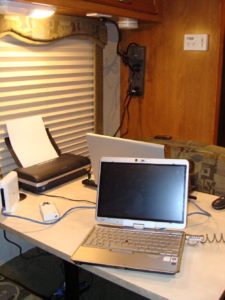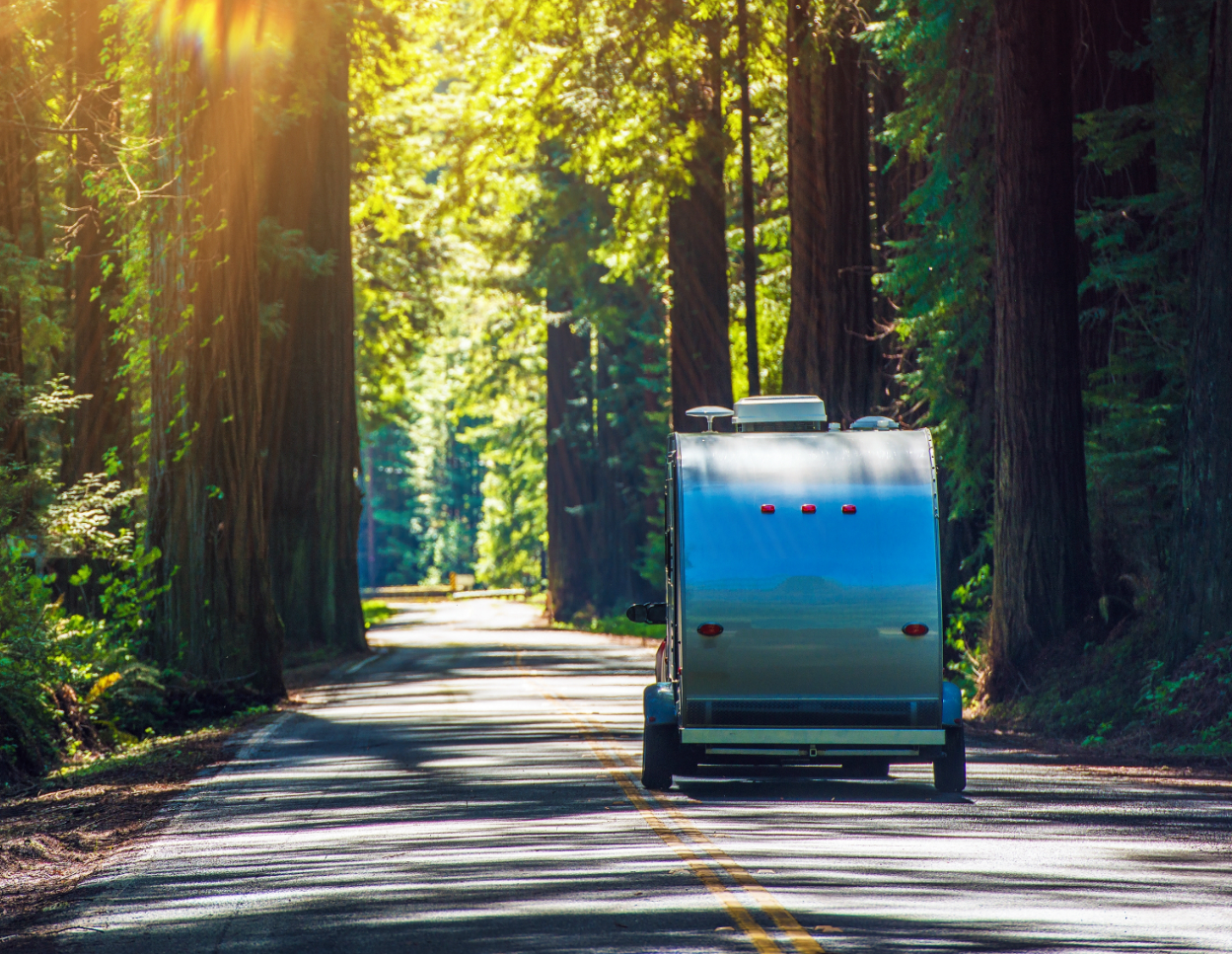 Ask almost any corporate executive or one of their employees sent home to work during the pandemic and a comment becomes clear: Why didn’t we work from home (WFH) or remotely sooner? Many learned that the corporate hive is an OK place to work. But someplace – almost any place – that’s remote can strike that spark that drives creativity and results, sometimes even better than those expensive corporate digs they’re spending a fortune to run.
Ask almost any corporate executive or one of their employees sent home to work during the pandemic and a comment becomes clear: Why didn’t we work from home (WFH) or remotely sooner? Many learned that the corporate hive is an OK place to work. But someplace – almost any place – that’s remote can strike that spark that drives creativity and results, sometimes even better than those expensive corporate digs they’re spending a fortune to run.
What countless thousands have discovered is WFH – or teaching kids from a virtual setting – doesn’t necessarily mean home. And working or learning remotely can also mean logging on from the road. Whether in an RV, a cabin, or some other place that’s decidedly not the traditional office, newcomers and old hats alike have proven “work and education are a thing, not a place.” With the right technology – a smartphone, a laptop, cloud-based services and reliable Internet or Wifi to connect it all – and the right mindset, you can work from almost anywhere. Heck, we’ve even opened the laptop at music festivals to ply a few hours working or blogging during the downtime.
So why not make your RV your home office?
As we head into a vaccinated and possibly more stable period of the pandemic, remote work seems here to stay. And RVs remain a viable, fun and mobile solution that feeds the need for productivity and escapism to that “quality of life” so many seem to have found since being dispatched from the corporate office. During the pandemic last summer, one manufacturer said almost half of all inquiries were from people looking to work from an RV.
That got me thinking… What do you need to work from an RV like you’re (not quite) sitting at some office desk? It’s not terribly different from what we need to work from home, an AirBNB, or some other remote office.
A little planning and forethought as to how your work and place can gel nicely and you could be punching that clock from the road in no time…
– A suitable place to work. Bloomberg recently wrote about how small-town America is seeing a boom in people moving in to get work done. You don’t need a specific place or destination. But just as during the pandemic, people from the Northeast are flowing to the Sunbelt (“Gonna be holed up, might as well be someplace I can step outside in flip flops and shorts”), a campground, BLM site, or other open is a suitable destination to get work done while refueling the soul. Assuming you have reliable…
– Wifi and mobile Internet. Face it, without Internet, our phones and laptops are dumb devices. So connectivity is key. Look for campgrounds with free or low-fee wifi. Many areas served by major carriers – like AT&T or Verizon – enjoy robust service and mobile hot-spot tethering where the phone becomes a router for various devices, like a laptop or tablet. Just remember, remote often means fewer bars. You might want to inquire about their “roaming agreements.” These are contracts that say Verizon calls and connections can be made over AT&T equipment when Verizon has no service in a given area (it used to be standard when “roaming” cost $.25 a minute. Now that it’s free, it’s no longer standard). Camping at a North Carolina music festival a few years back, my AT&T phone became a “No Service” brick the moment we began climbing the mountain road to the festival grounds; Barry’s T-Mobile phone was all Full Bars the entire time.
– Strengthen that service. Not everyone has unlimited Internet, and many of the things we want to do online – download, launch or use apps; access, manage and upload large files to and from the cloud – need as robust of service as we can muster. Our friends at Driving n Vibin recently wrote about wifi boosters, which strengthen the wifi signal. They also explored unlimited Internet from Starlink. One person wrote about getting unlimited mobile Internet from Nomad Internet, which features several different plans from all the major cell phone companies – for any phone, locked or unlocked. Beware: Not all work as expected. Someone reported installing a MoFi router with a PagePlus Cellular plan and SIM card. They soon discovered that PagePlus didn’t permit use of the SIM card in the MoFi router.
– Reliable cloud storage. I’ve used Carbonite for years. For about $60 a year, it automatically backs up my files as I’m working on them, then makes them accessible from anywhere I have reliable Internet. Tom’s Guide recently posted a list of the best cloud backup services. Unless your laptop with a docking station and monitor is your primary workstation (and every document or file is in that harddrive), backup is a true work-from-anywhere solution.
– Portable devices and power solutions. Your corporate office has a phone, computer and internet. Your remote space or RV should, too. What else might you need? We use a portable battery and pack the laptop bag with all the cables and adapters needed to . If you mix work and pleasure (like hiking, canoeing, and generally exploring these new surroundings), your phone likely will need a boost along the way. We found this on a recent trip to Colorado. My phone was near death, until I remembered my portable battery charger. The ultra-slim USB power bank has built-in Micro, USB C and iPhone lightning cables compatible with all smartphones, as well as a built-in AC wall plug. Carry that bad boy with you and pull it out, plug ‘em in – and in less than an hour, your device is fully charged with several more charges to spare.
– Creature comforts. Just like the kitchen table might not be the best place to work from home, the dinette might be uncomfortable or ill-suited for the daily grind. As a 30-year home officer, I’m just as comfortable working from bed, the couch, or the kitchen table as I am in my bona fide home office. Ignore the naysayers who proclaim “no place but the office.” Find your space. Still, strive for ergonomics (the alignment of space to the human body), whether it’s tweaking the height of your dinette table or bench, even installing an articulating wall bracket for the computer monitor or heading out to the picnic table to spend some hours. Need more ideas and images? Check out this post from ChiefHomeOfficer.com or this post from Fulltime Families.
 – Tweak your needs. We flew to Vail recently to chill with some friends in their condo. The place was well equipped, with solid wifi – though poorly placed and hard to reach electrical outlets. That made overnight powering of my phone and Chromebook a PITA (“pain in the a**). Our Coachmen Freedom Express similarly lacks outlets in all the right places – like near the dinette or jackknife sofa. So we keep extension cords and 10-foot iPhone cords stashed in a cabinet dedicated to Electrical & Power Stuff to make sure power is close at hand.
– Tweak your needs. We flew to Vail recently to chill with some friends in their condo. The place was well equipped, with solid wifi – though poorly placed and hard to reach electrical outlets. That made overnight powering of my phone and Chromebook a PITA (“pain in the a**). Our Coachmen Freedom Express similarly lacks outlets in all the right places – like near the dinette or jackknife sofa. So we keep extension cords and 10-foot iPhone cords stashed in a cabinet dedicated to Electrical & Power Stuff to make sure power is close at hand.
 In 2017, I wrote about the “Death of the Away Message.” Communications tools were “so pervasive, so ubiquitous, so tethering,” I argued, “that we never really can disconnect.” To that, someone replied with a gentle suggestion regarding my vacation: “‘Unplug a little if you can.’” Four years later, technology has evolved. It’s beyond ubiquity. It’s as natural as the hand on the end of your arm. And why disconnect, when you can connect as you see fit.
In 2017, I wrote about the “Death of the Away Message.” Communications tools were “so pervasive, so ubiquitous, so tethering,” I argued, “that we never really can disconnect.” To that, someone replied with a gentle suggestion regarding my vacation: “‘Unplug a little if you can.’” Four years later, technology has evolved. It’s beyond ubiquity. It’s as natural as the hand on the end of your arm. And why disconnect, when you can connect as you see fit.
 In another piece, we wrote about how summertime’s a great time to hit the open road – without leaving life behind. Technology widely available to the consumer market helps the “anywhere” office – and online personality – come alive without an electrical outlet or Ethernet cable in sight. I called it “Americana in a way Norman Rockwell never could have imagined.” We even shared the concept with Atlantonians via a hit with the Fox affiliate there.
In another piece, we wrote about how summertime’s a great time to hit the open road – without leaving life behind. Technology widely available to the consumer market helps the “anywhere” office – and online personality – come alive without an electrical outlet or Ethernet cable in sight. I called it “Americana in a way Norman Rockwell never could have imagined.” We even shared the concept with Atlantonians via a hit with the Fox affiliate there.
Working and playing from the campground, the backroad, the interstate highway – or the information superhighway means working from anywhere and “location independence” can be found wherever life’s journey takes you. And once the pandemic is through, who knows – these workplaces may become a permanent place to work.
